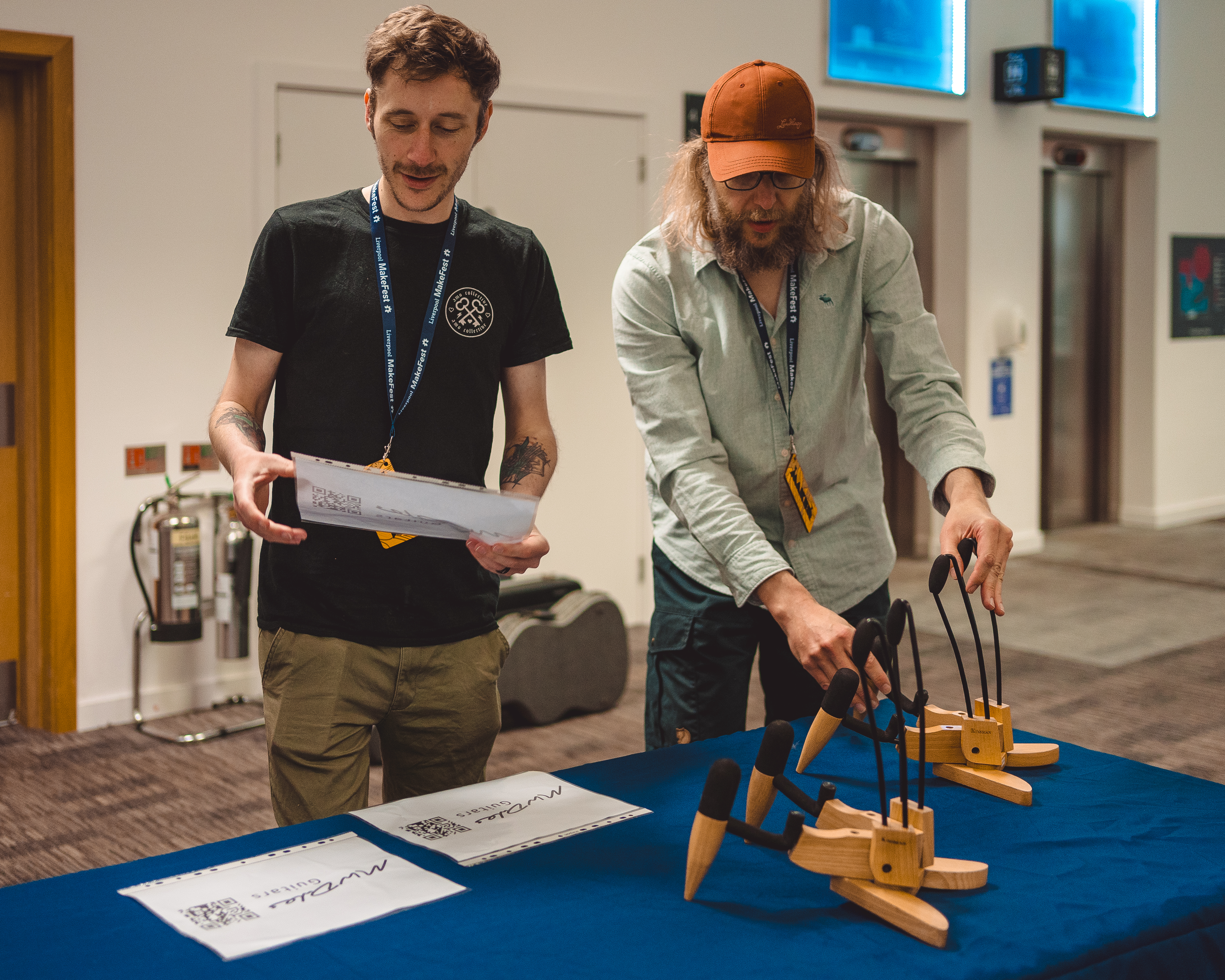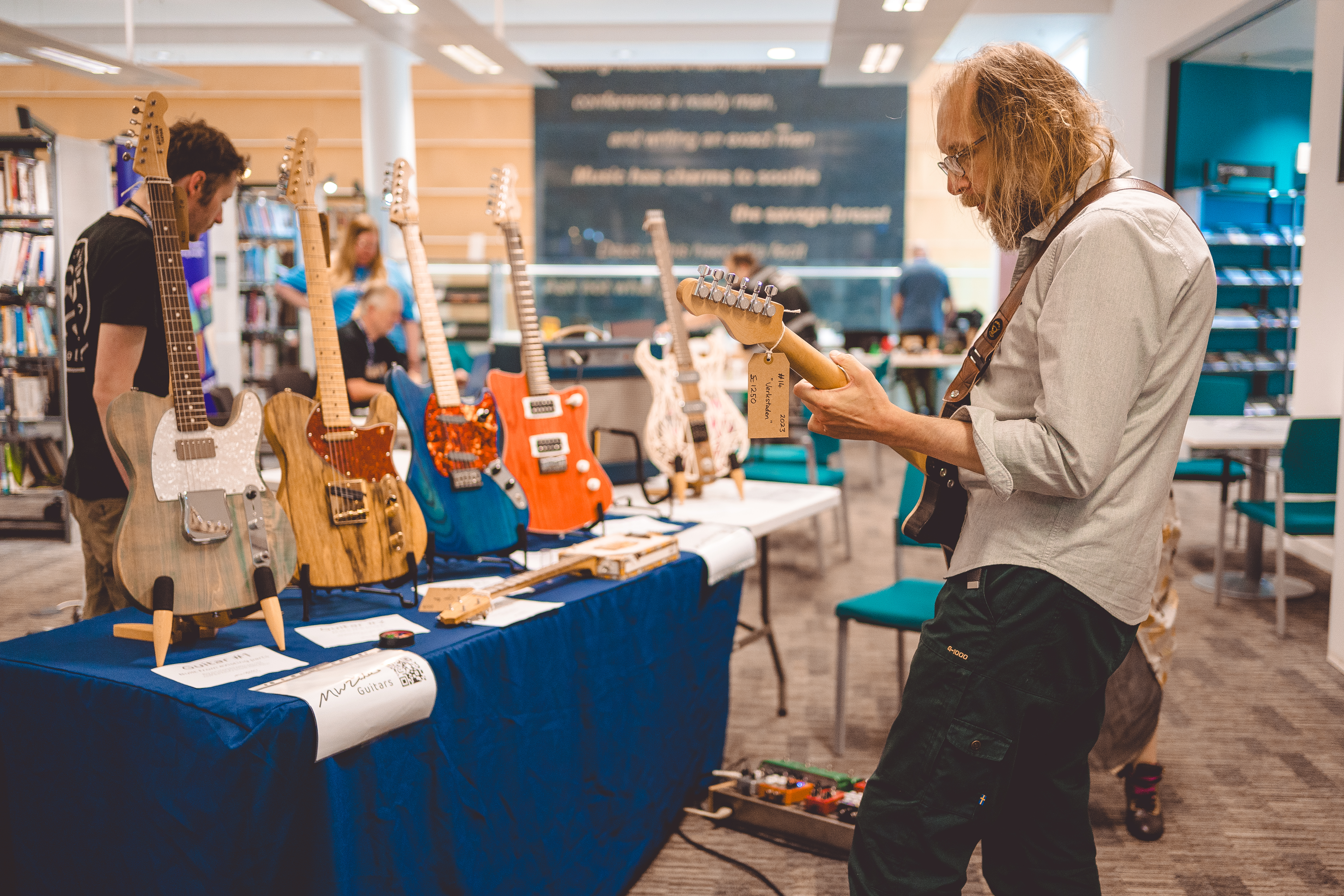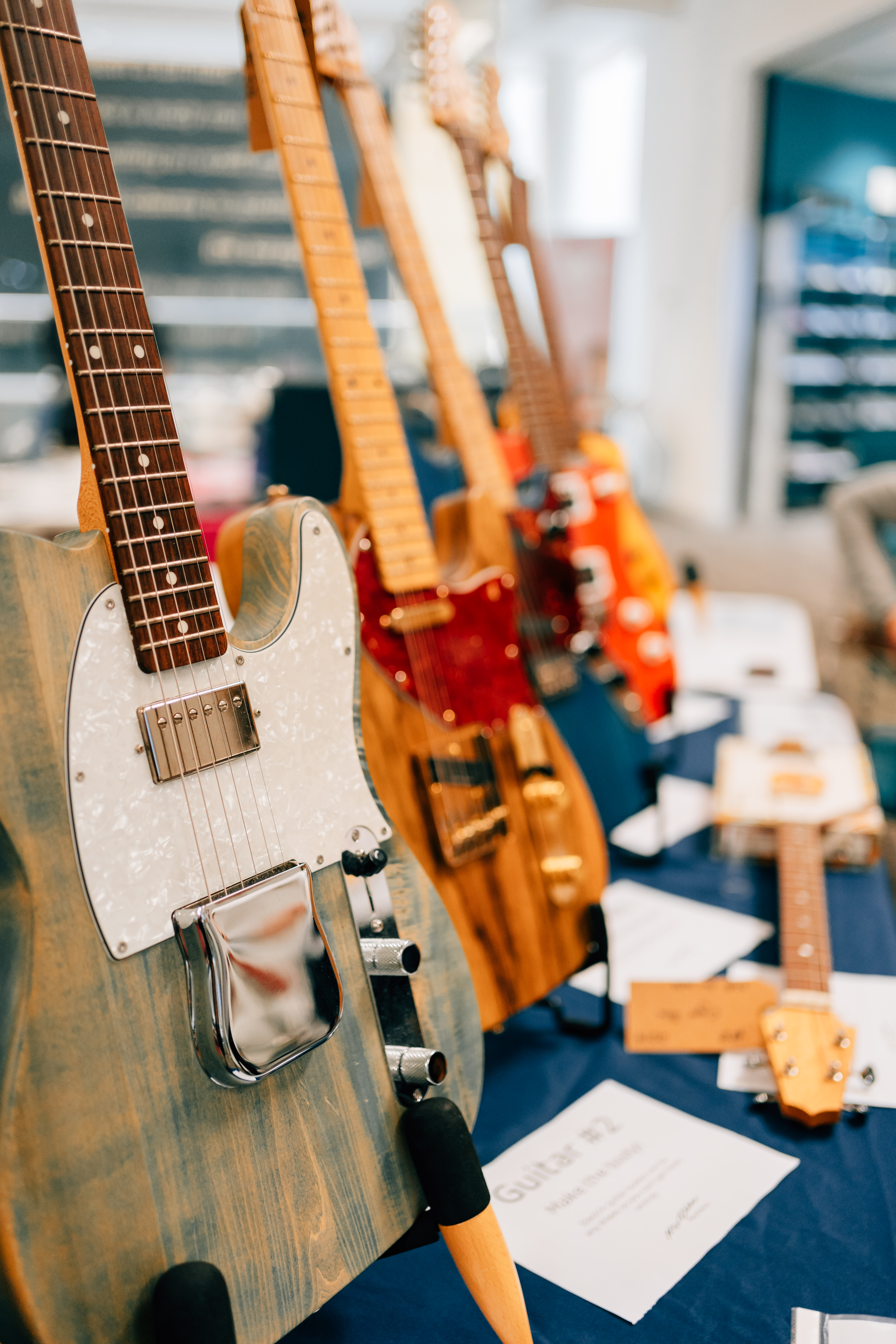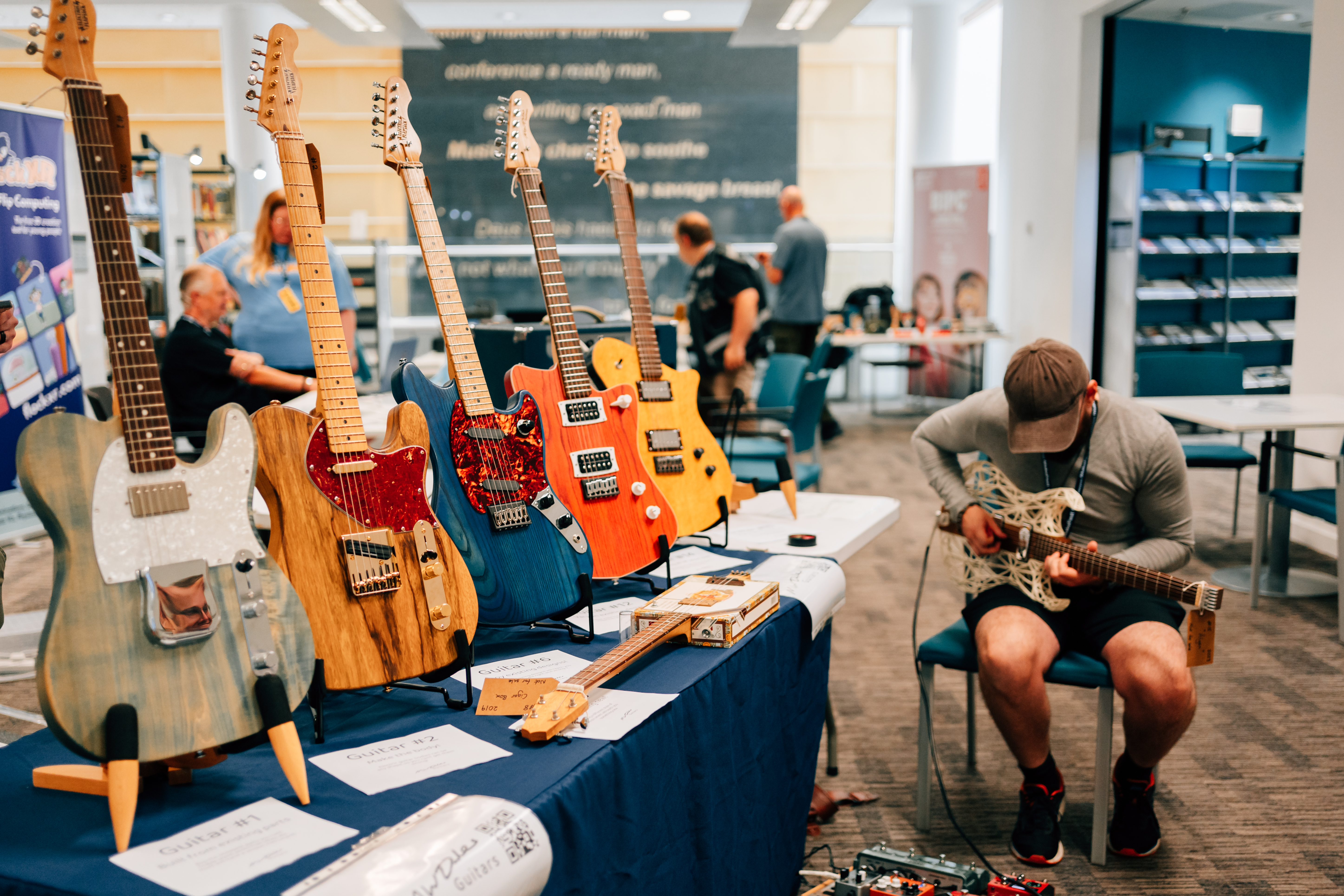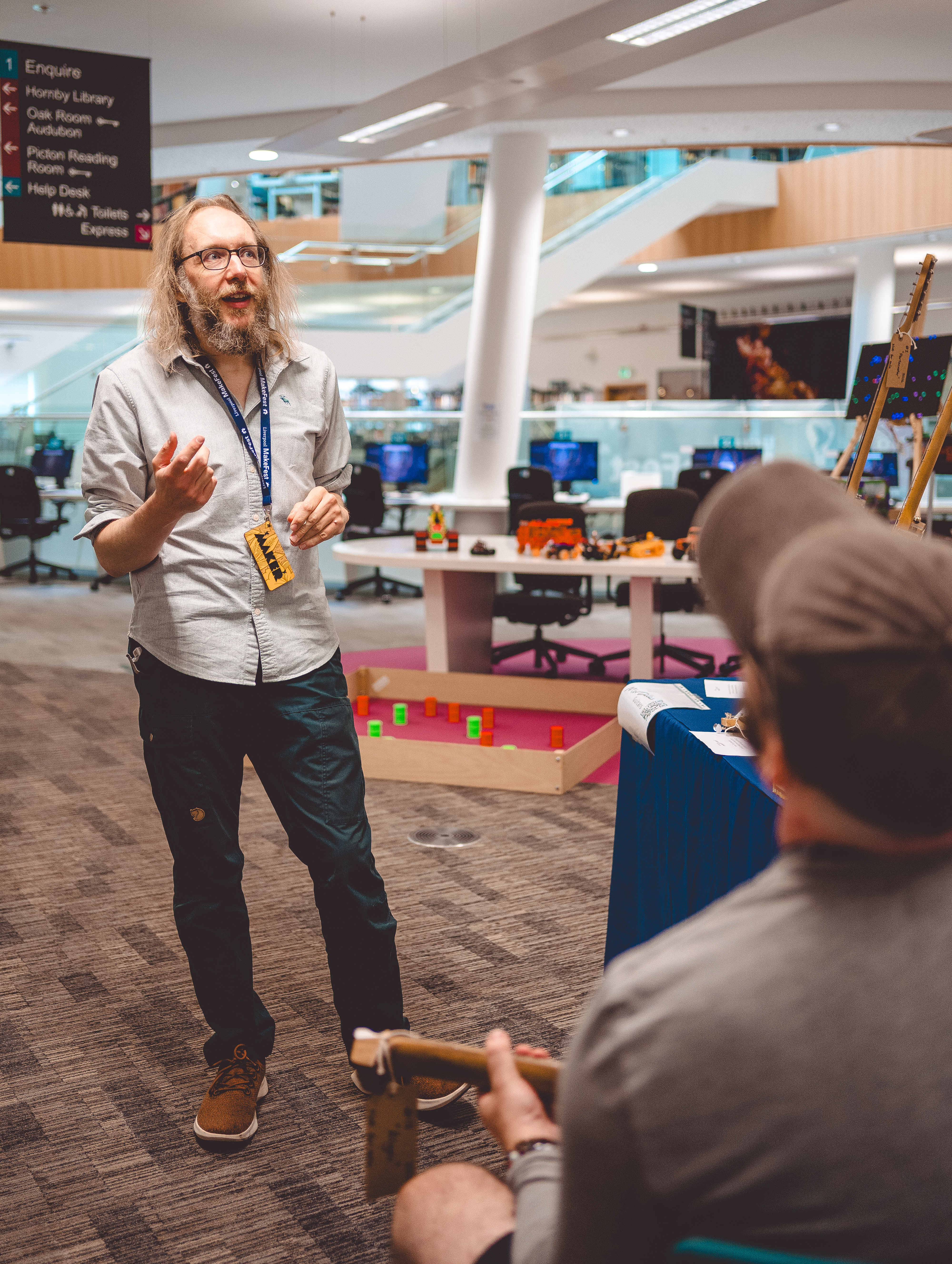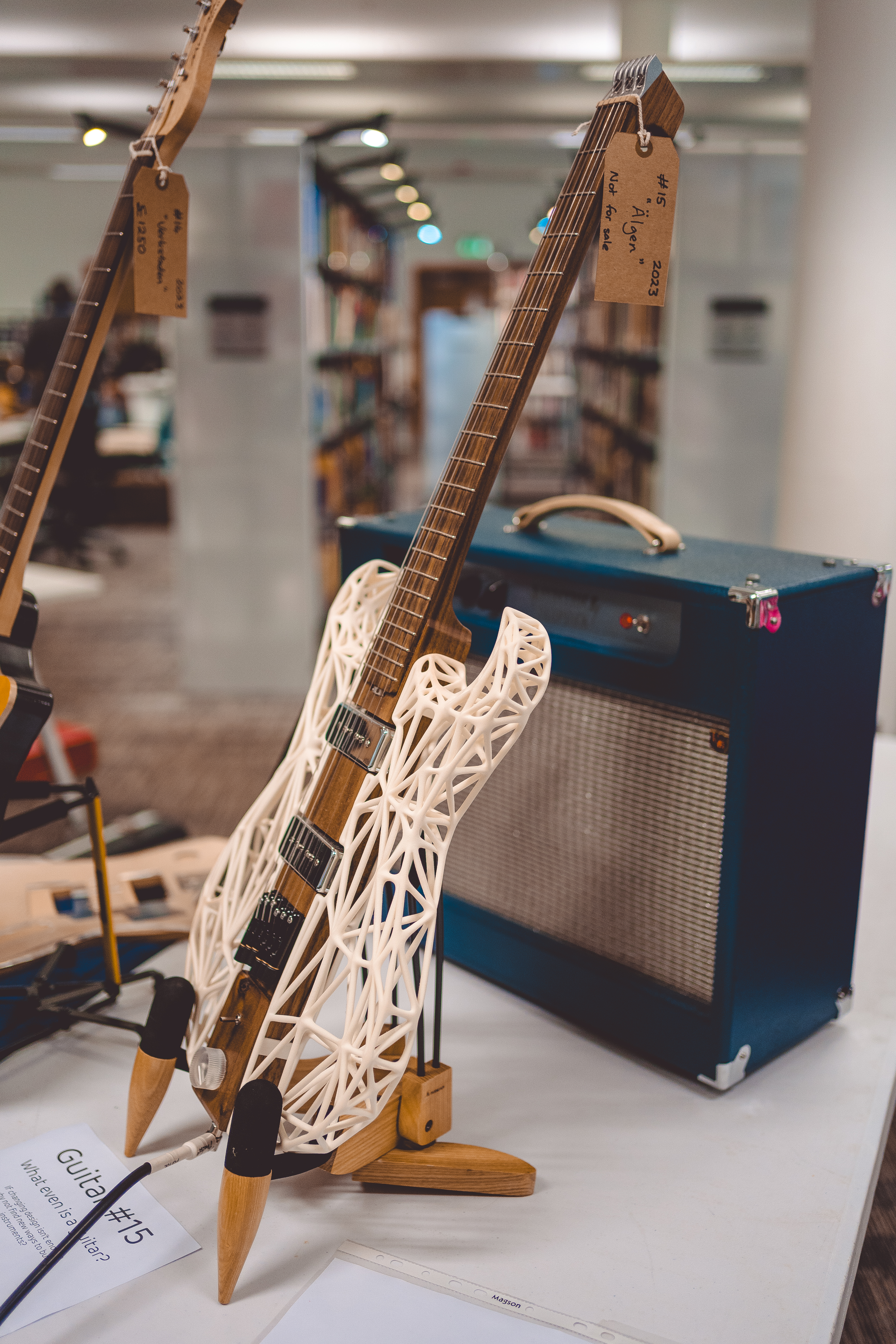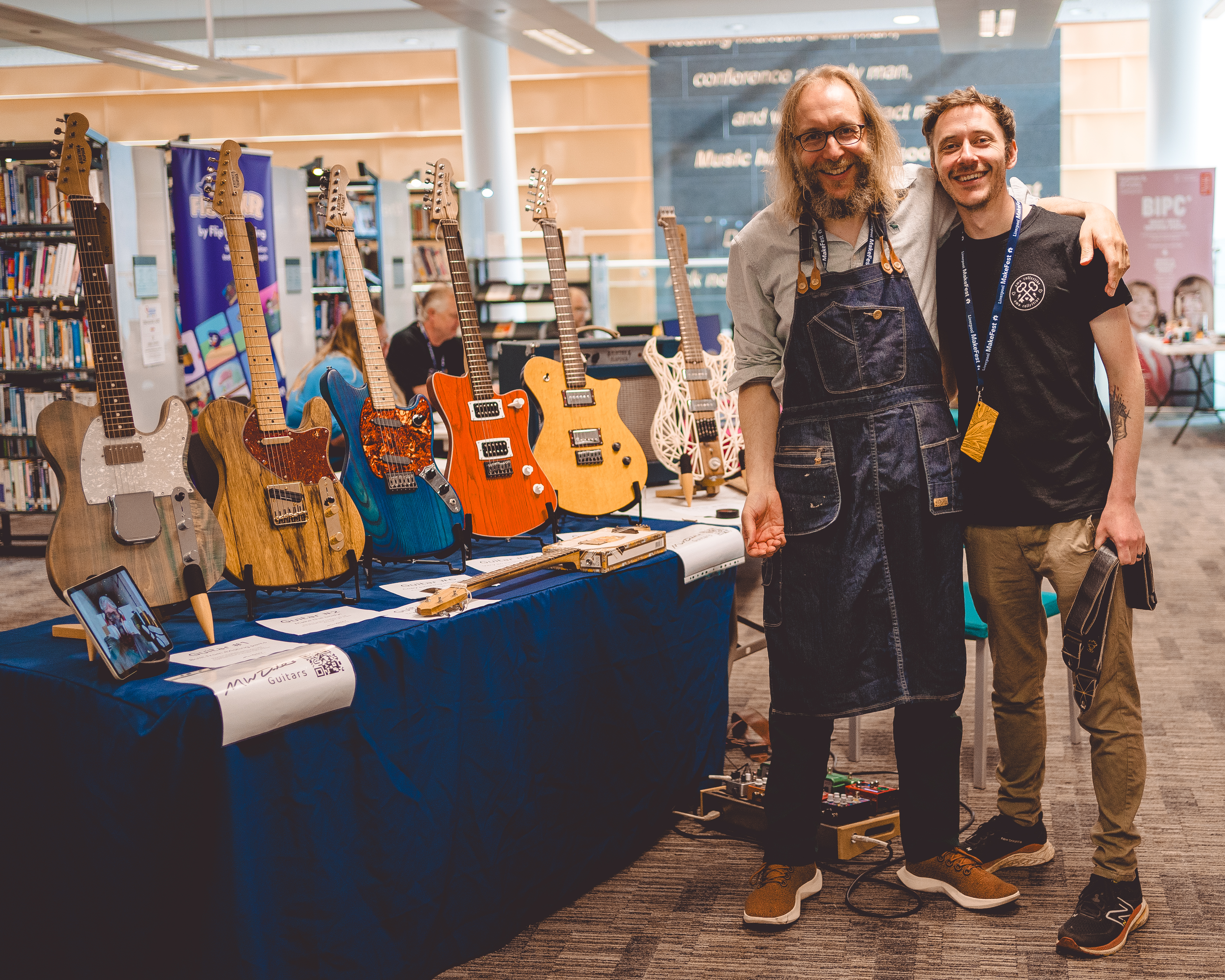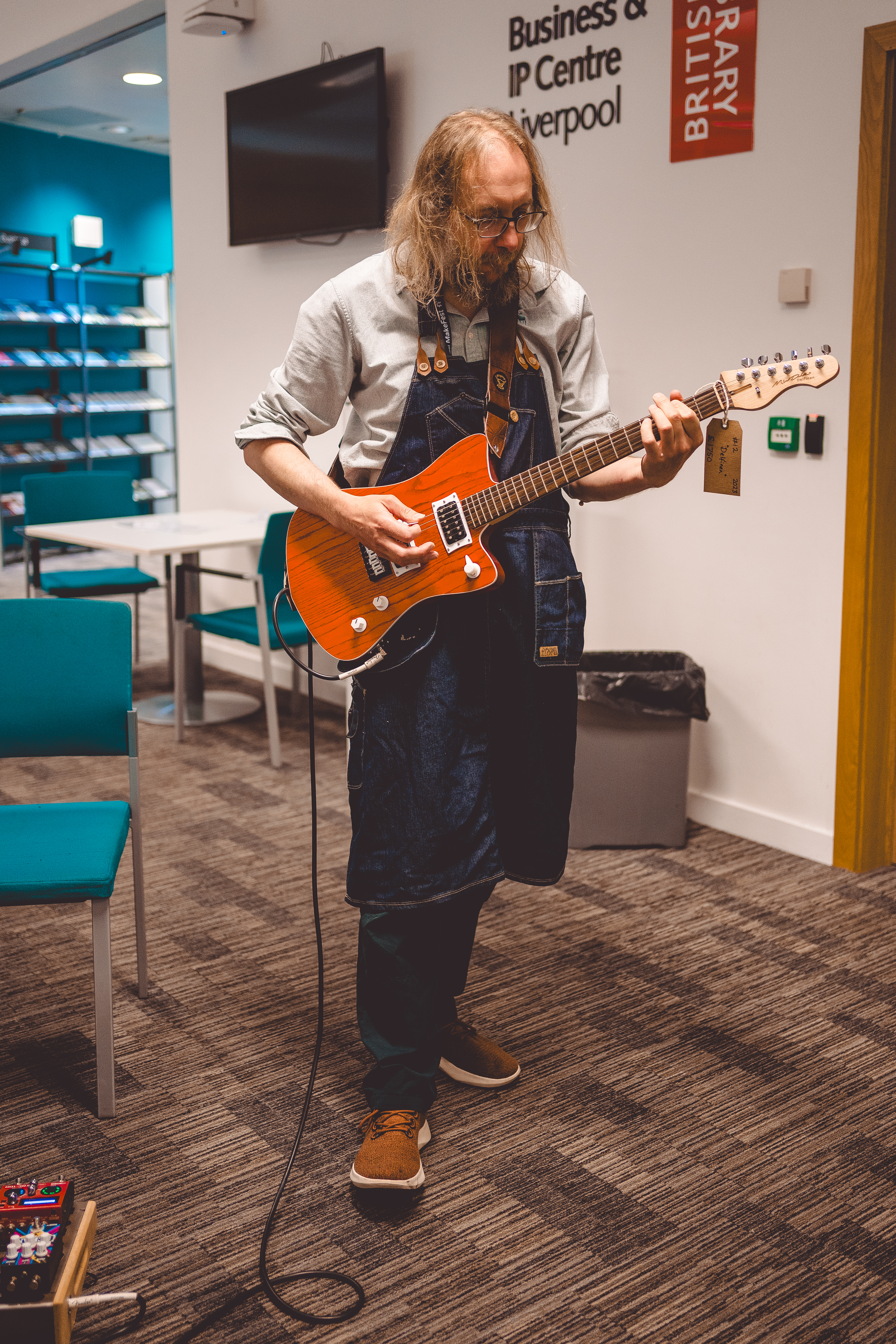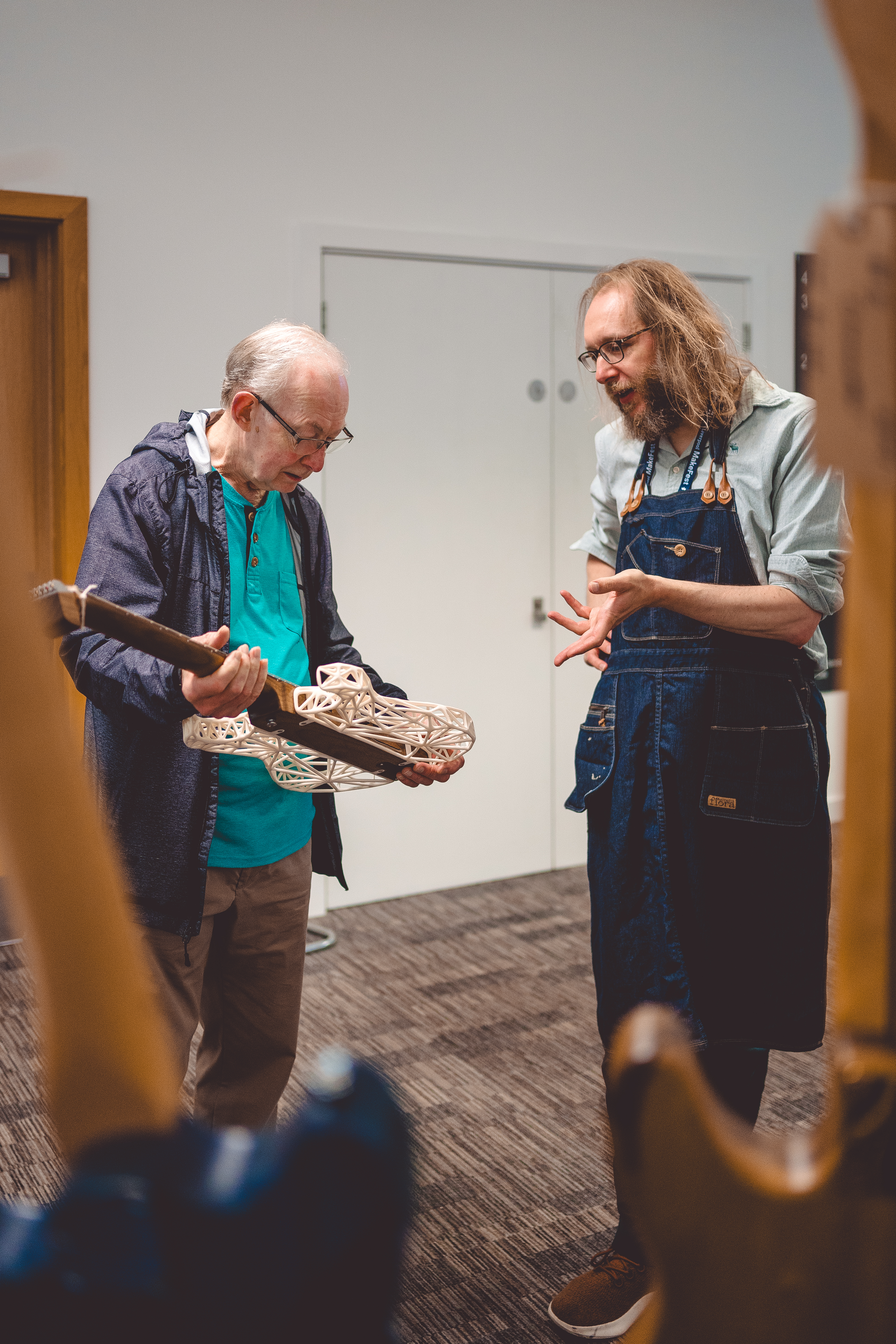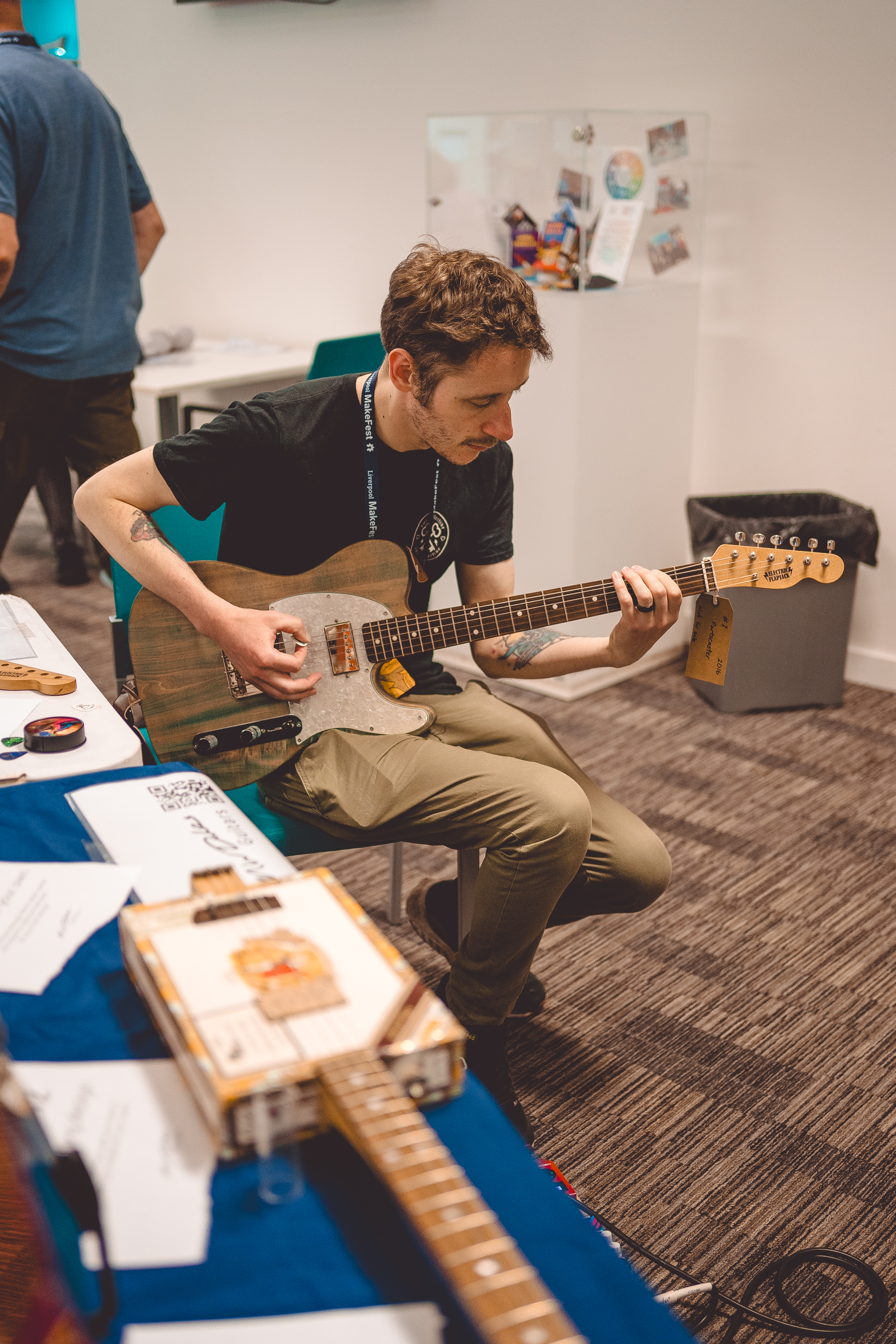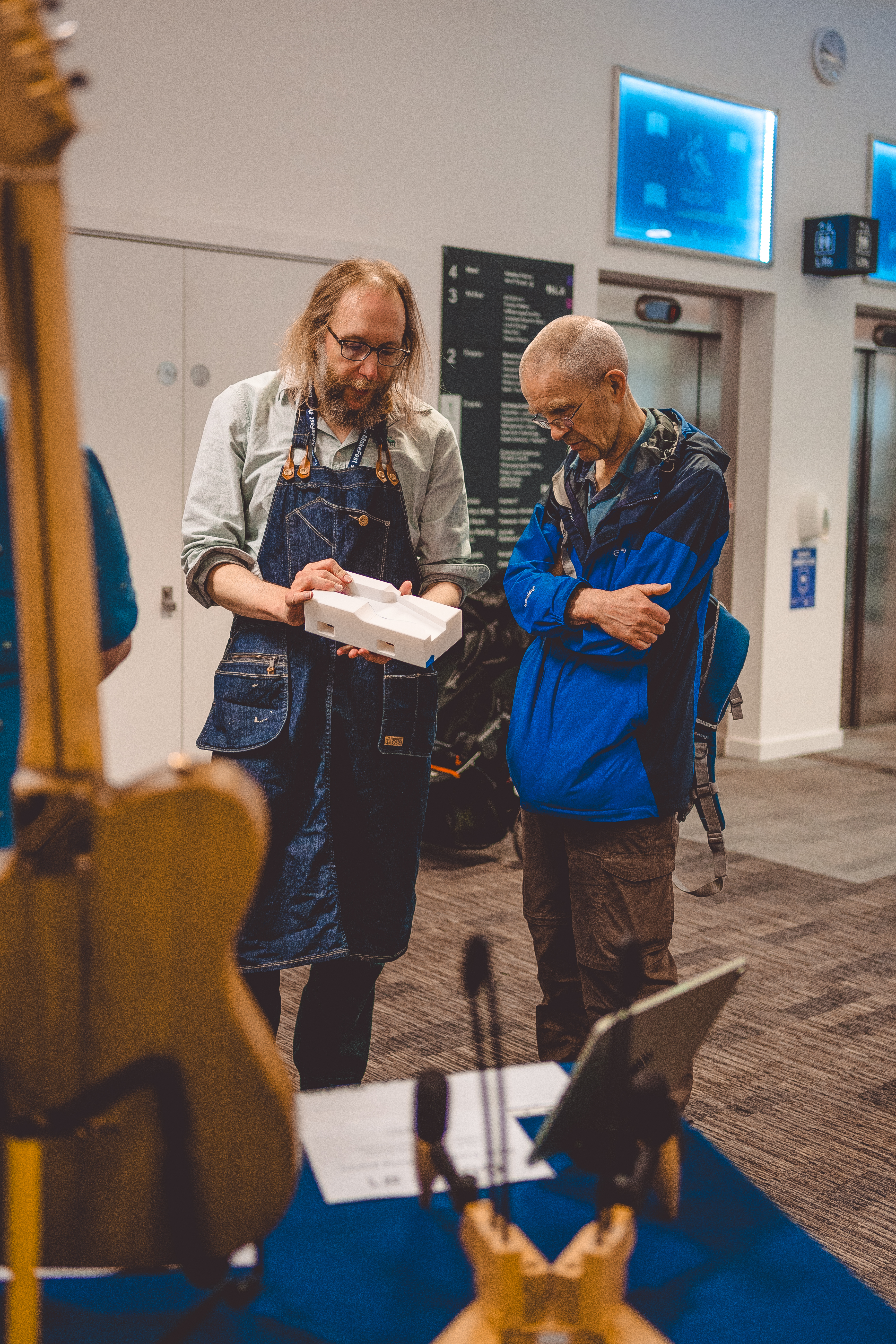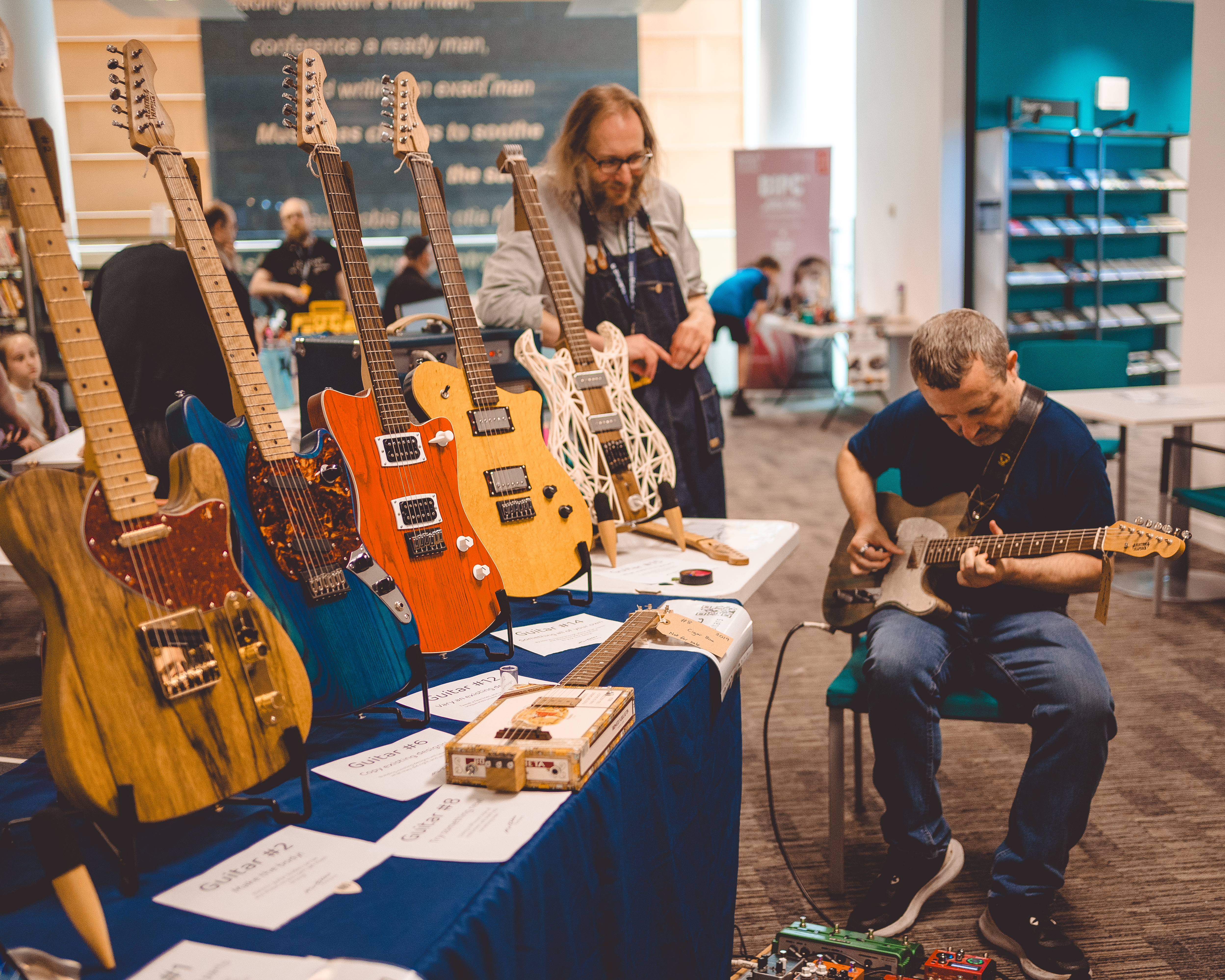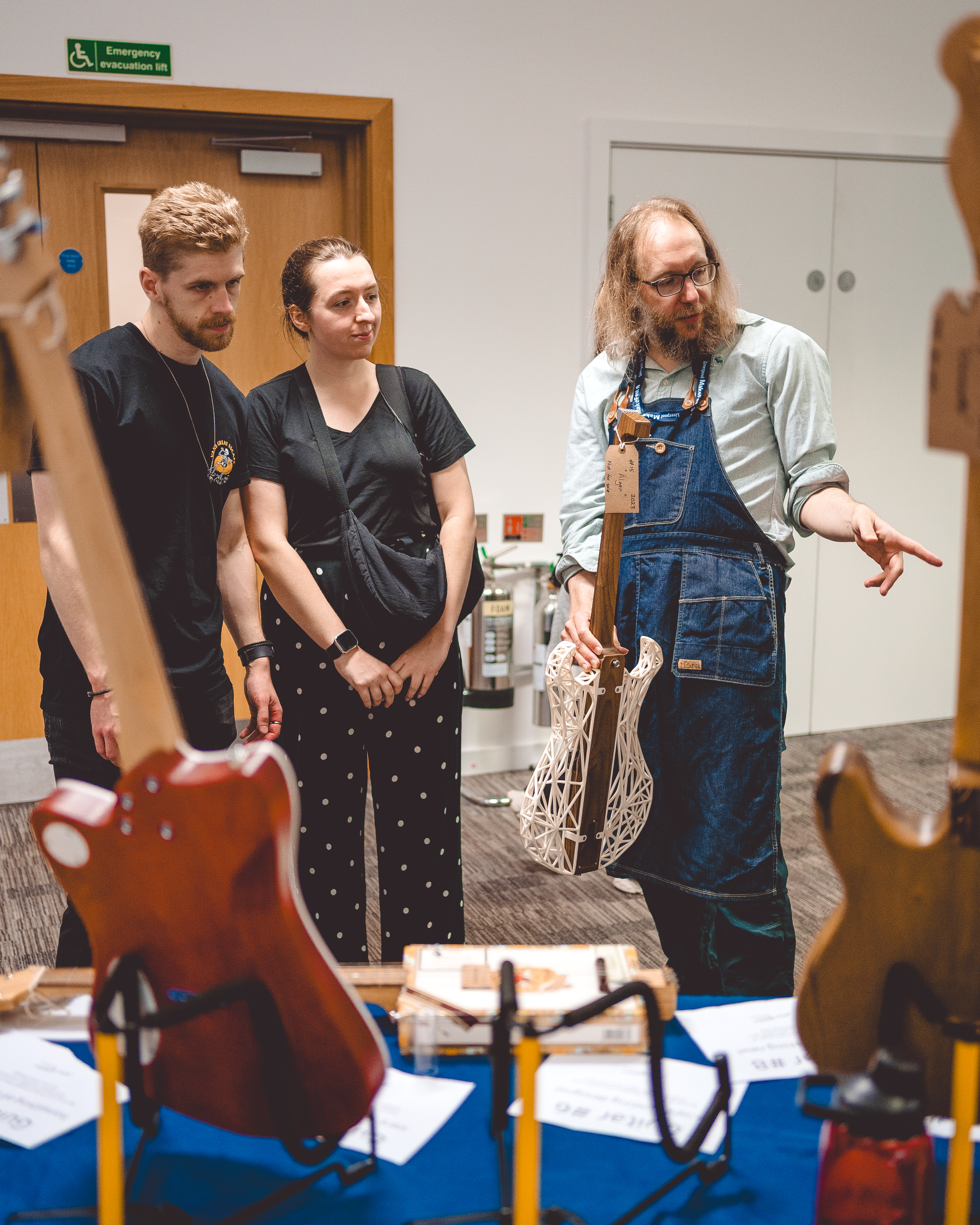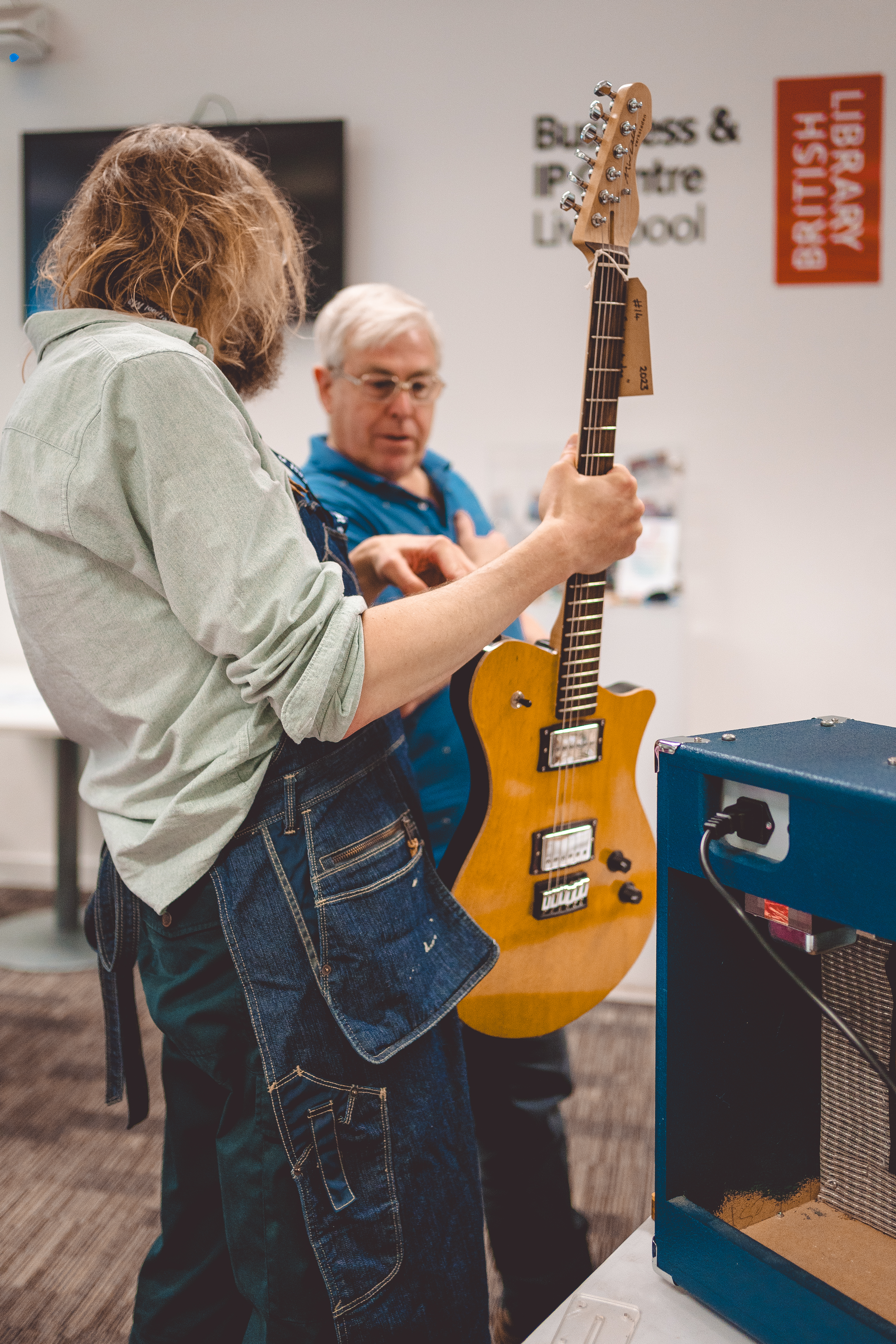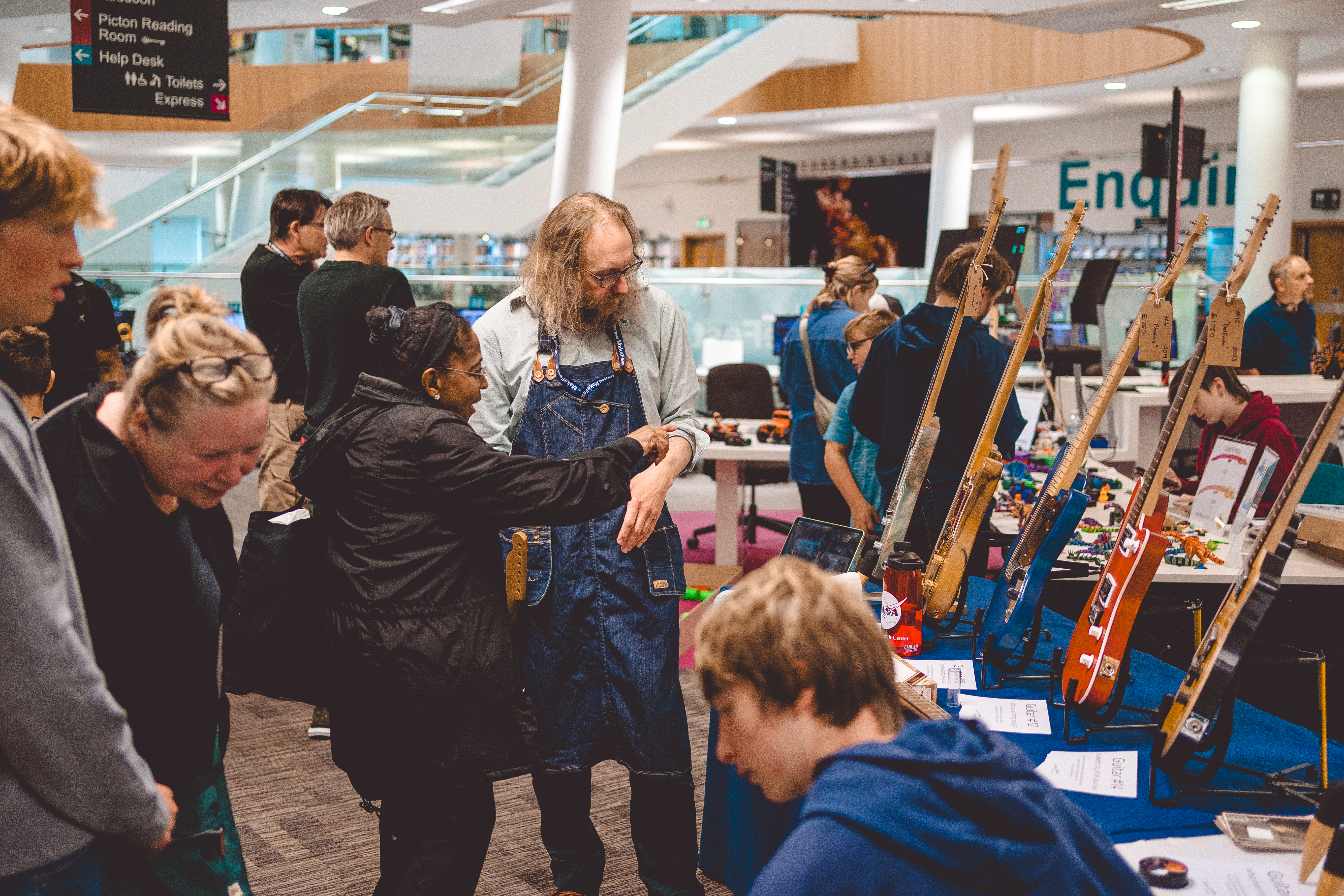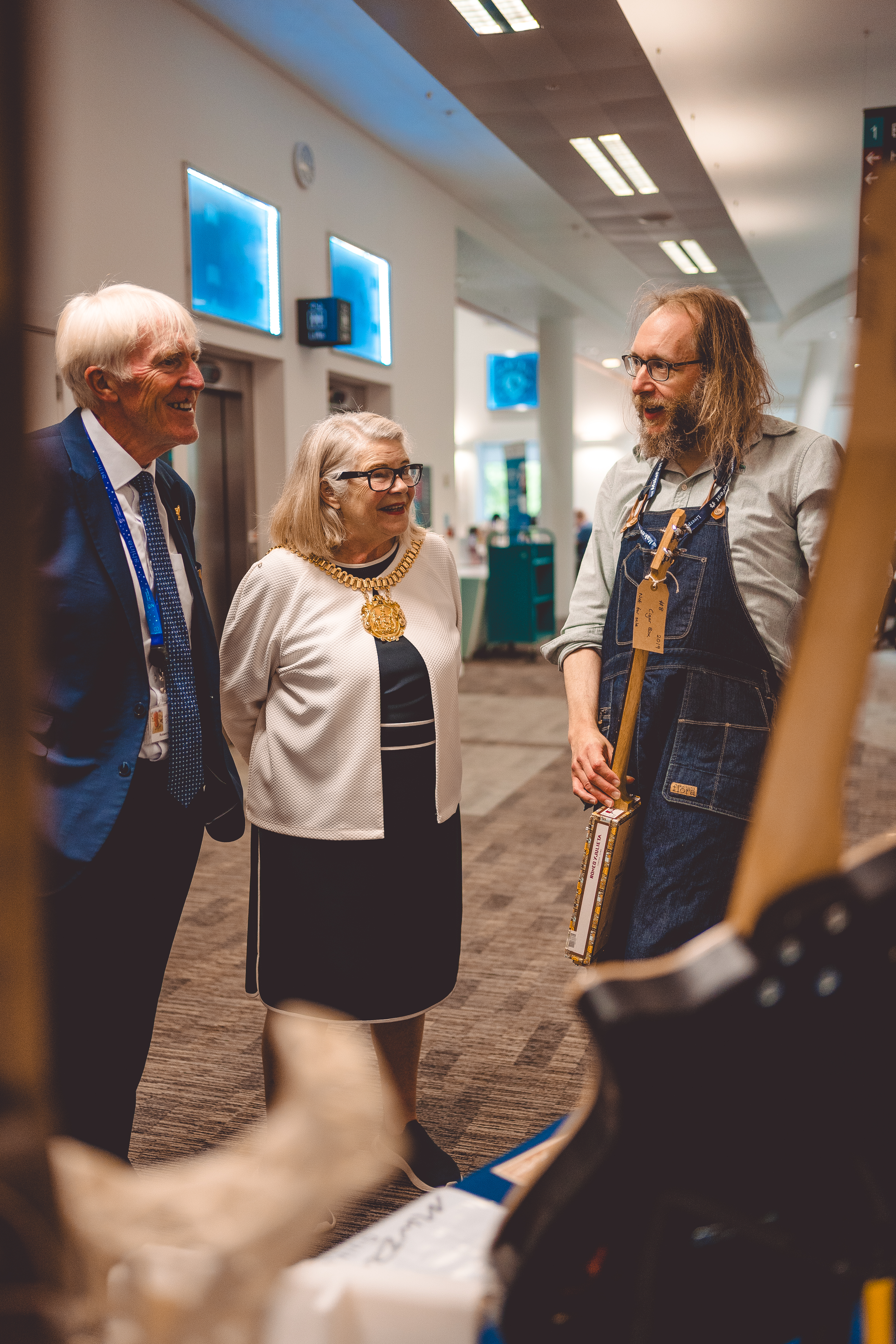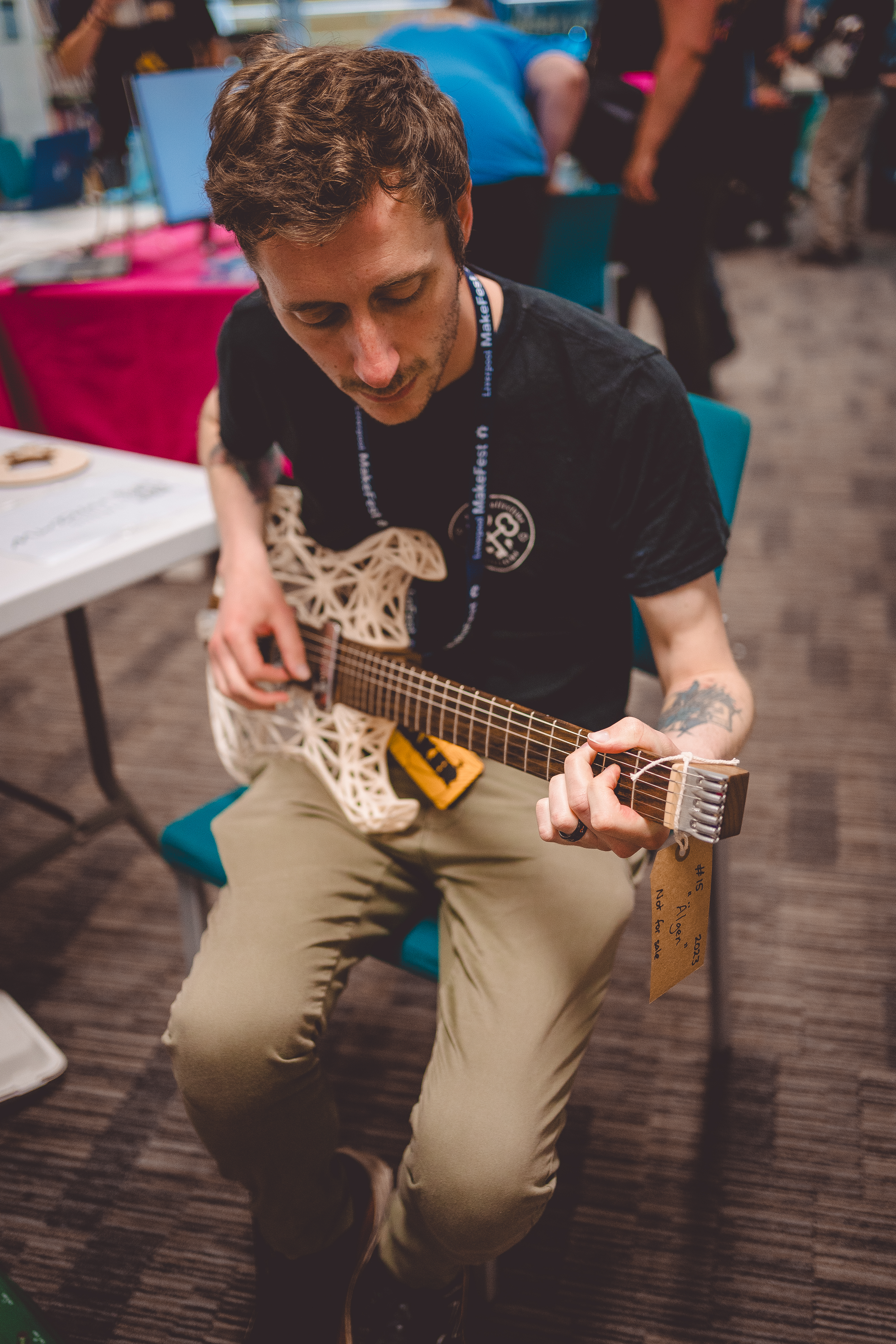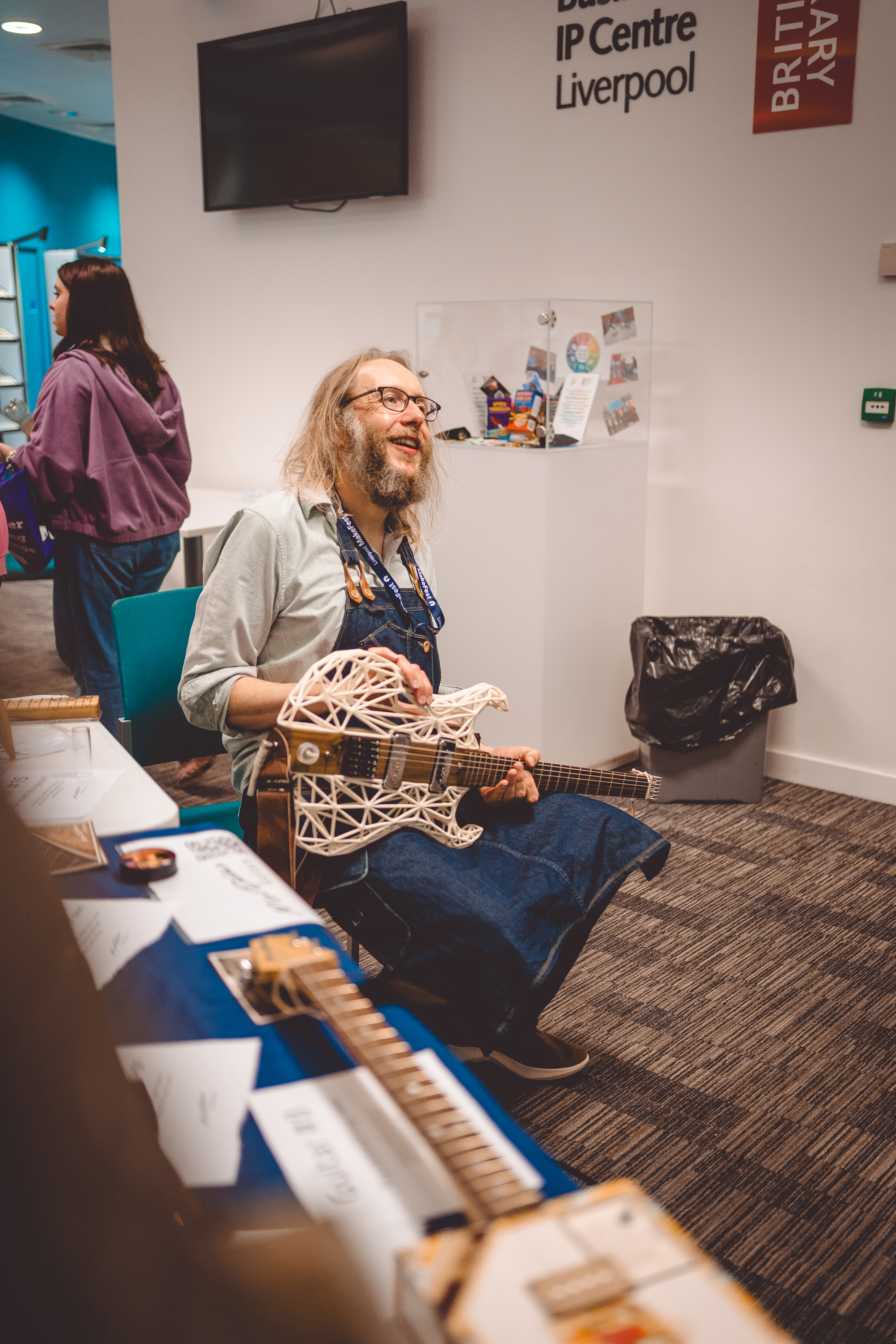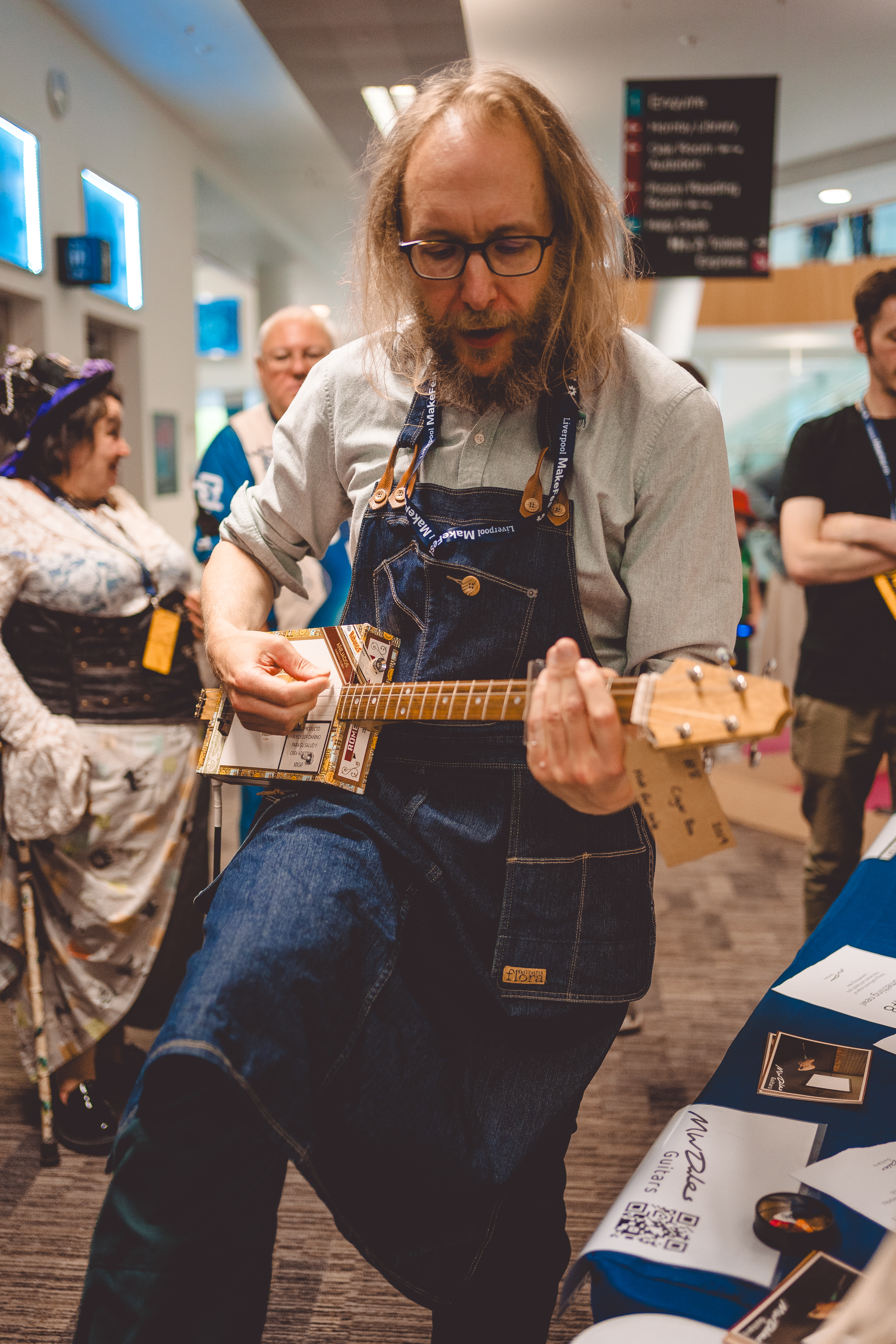Liverpool Makefest 2025
Published 20 Jul 2025
This year was the tenth birthday for Liverpool Makefest, and I was delighted to be able to return as an exhibitor once more and attempt to explain guitar building to the people of Liverpool. I started exhibiting at Liverpool Makefest in 2017, having only just started building guitars the previous year. Whilst it wasn’t quite my tenth anniversary of building guitars, it felt a good time to do a sort of retrospective, given they asked us to do something extra this year to mark the occasion. So I went for scale: normally I take one guitar, perhaps two, or three at the most: this year I took along seven guitars I’ve built: ranging from the very first parts build, to early complete builds, though to the latest conventional and unconventional guitars. Rounding it off I also took along the amp I built and the cigar-box guitar I actually made specifically for Makefest in 2019.
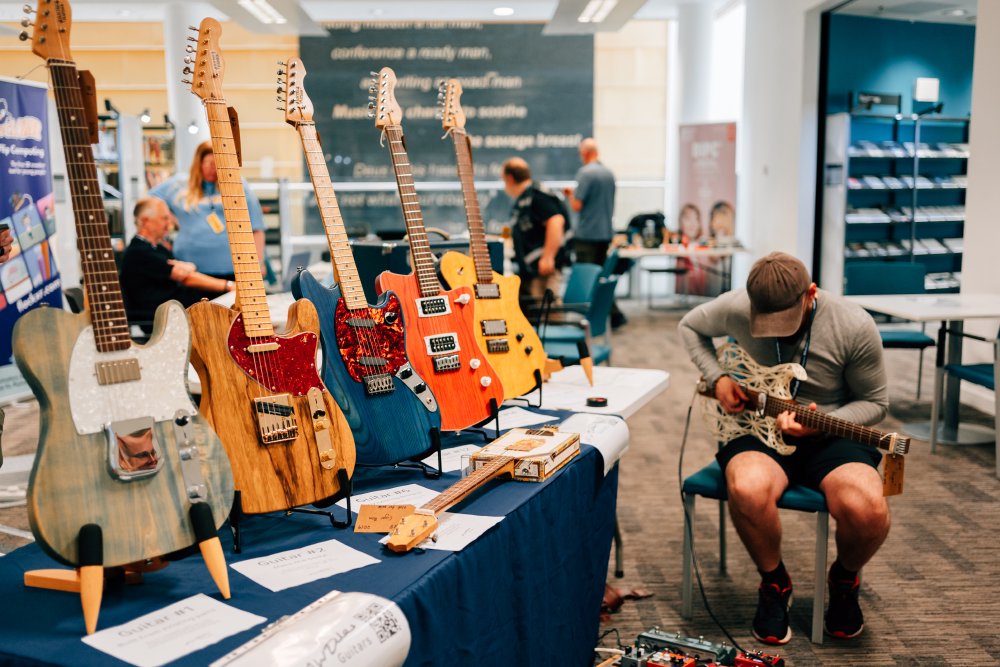
Truth be told, the retrospective wasn’t the original plan. I did have plans to show something new, but nothing came together in time despite a couple of starts at various things, and so this retrospective was something of a fallback position. But as a group of twenty somethings from London once said: you can’t always get what you want, but if you try sometimes, well, you just might find you get what you need; given that I’ve struggled with progress this last year, struggling to get out of the shadow I made for myself with Älgen, a reminder of what it is I do was probably what I needed as much as anything else.
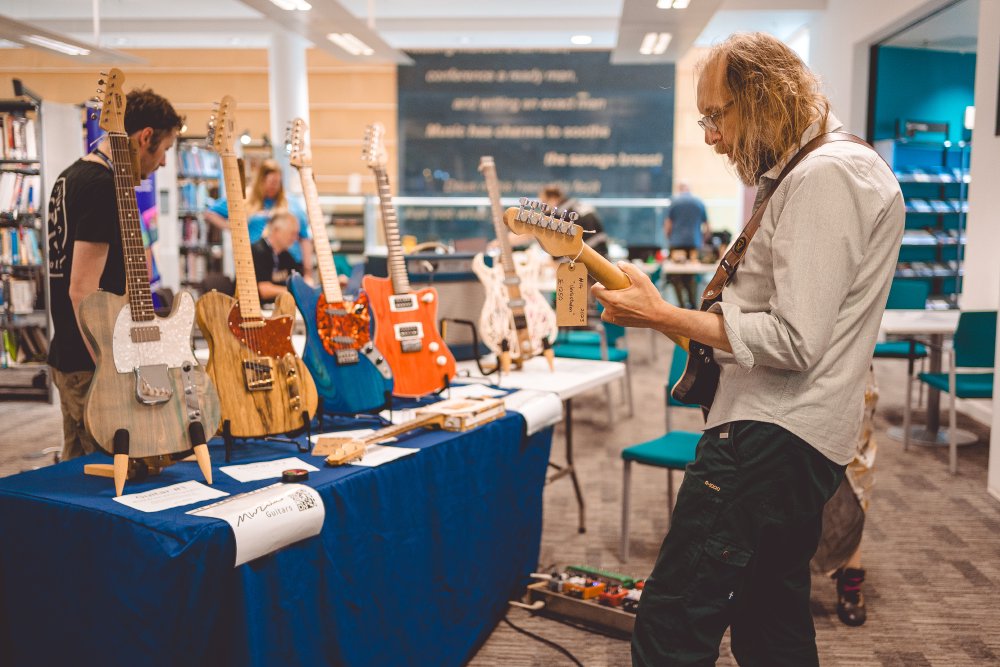
One of the reasons I enjoy Liverpool Makefest each year so much is it’s the chance to share what I do with so many people; not in a “isn’t what I do great” way, but in a way to talk about what interests them, to try inspire them to try making something, or just to share in peoples’ enthusiasm for music or making or both. The audience of people who stop by is quite diverse: some are experienced players interested in the instruments; a few are people who have tried making guitars or related things themselves and are interested in comparing notes; some are interested in learning how guitars are made or how what I do is perhaps different; and some just want to look at the shiny nice objects and move on. Whatever the motivation for people stopping by, the day is generally a blast, and I feel very privileged to get to take part in it every time.
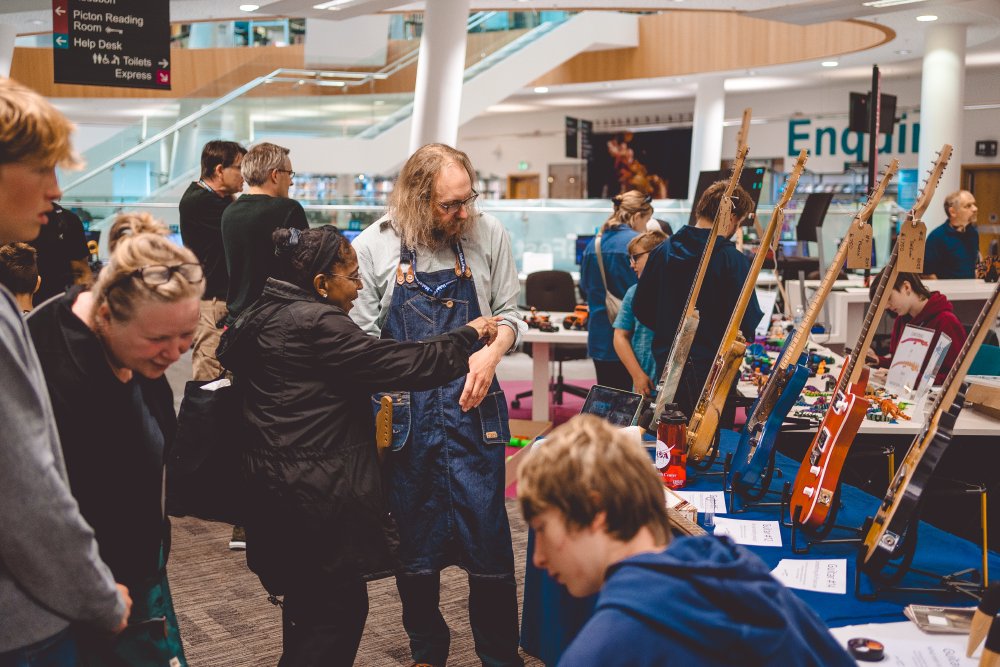
For the last few years I’ve focussed on Älgen, which is quite an unusual guitar and I guess somewhat of an advanced build, being how it brings together a bunch of different worlds into a single instrument - and my focus has been trying to show people that there are new techniques out there for building things that in the past were only possible in advanced industries, but now accessible to hobbyists, like custom 3D-printed metal parts. But this year it was more of a return to the narrative I tried for the first few years of Liverpool Makefest, trying to show that guitar building is an accessible hobby, and that the fancy guitars I’ve shown of late are not where I started. Each year at Makefest I get a few comments like “you must be so clever/smart/talented to do this”, and whilst well intended I find that a little frustrating, as I’m none of those things and I’m actively trying to show that isn’t the case. The one skill I’ve managed in all this is just to start small and each time do a bit more than I can do, and hang out with folk that can help me when I get stuck.
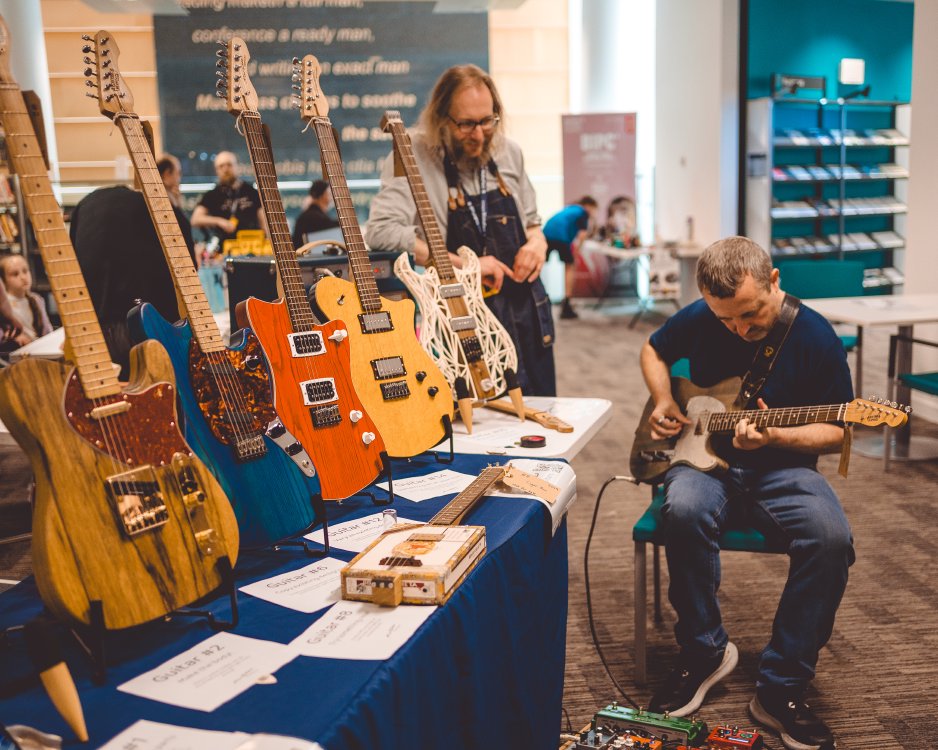
The line up of guitars on the table thus represented my journey. Back in 2016 I knew no woodwork, but wanted a guitar that was like my Fender Telecaster but slightly different, so I just bought the cheapest parts I could, watched some YouTube tutorials and put together my first build. I got help from people in the local community workshop when they saw me struggling, and thus I was able to make the guitar you see being played in the above picture.
My brother Tris, then guitarist in the band IKARI, saw this and asked me to make him one similar, but he had a few differences, including using some different wood for the body. So for that one I bought the neck still, but made the body. Building the body of a solid-body electric guitar is relatively low risk, as if you mess it up it doesn’t really matter too much, and so was a great start to doing some wood work. That instrument, christened the chuncaster by Tris, is clearly not made to the level of a proper luthier, but he played it on an album, in music videos, and most crucially at a gig at King Tut’s Wah Wah Hut in Glasgow: seeing a guitar I’d built being part of a gig where 200 people were having a blast convinced me that guitar building was worth sticking with. Tris was actually at Makefest this year, lending his guitar to the table and helping out along with his photographer wife Ket who took all the photos here (thanks Ket, they’re ace!).
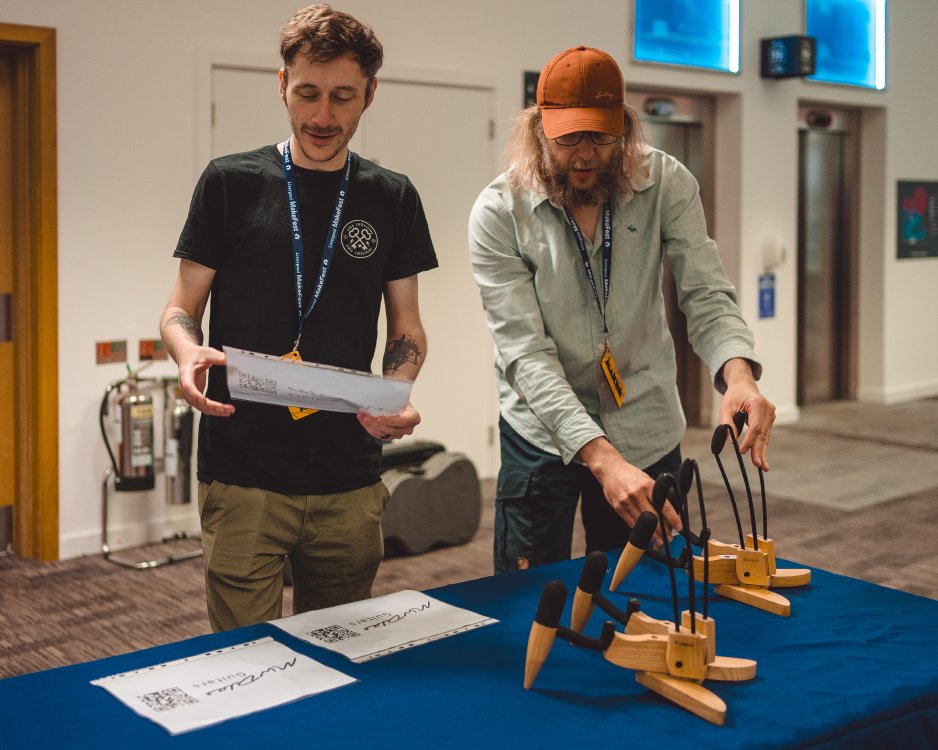
So it went on with the building, over the last 9 years I’ve just kept doing a little bit more on each build: the next two I built fully by hand but were still telecaster shaped, then I made another style of existing guitar by hand, before slowly moving onto my own designs, and trying to integrate more 3D-printed and laser-cut parts to align with my other interests. Each time getting stuck and finding a way forward thanks to others being generous with their time and knowledge.
I think I lose track of how far I’ve come, because it is all incremental improvements instrument by instrument, and because I share a workshop with two excellent full-time builders I know that I’ve got lots to aspire to, and so it has felt like I’ve been a little stagnated. But in trying to show people at Makefest this year that building can be an incremental thing, and it’s okay to grow over time, and then pointing to specific examples of the guitars I was able to assemble for this show: it let me feel a sense of pride in my work that normally I don’t allow myself when focussing on that next increment I need to make.
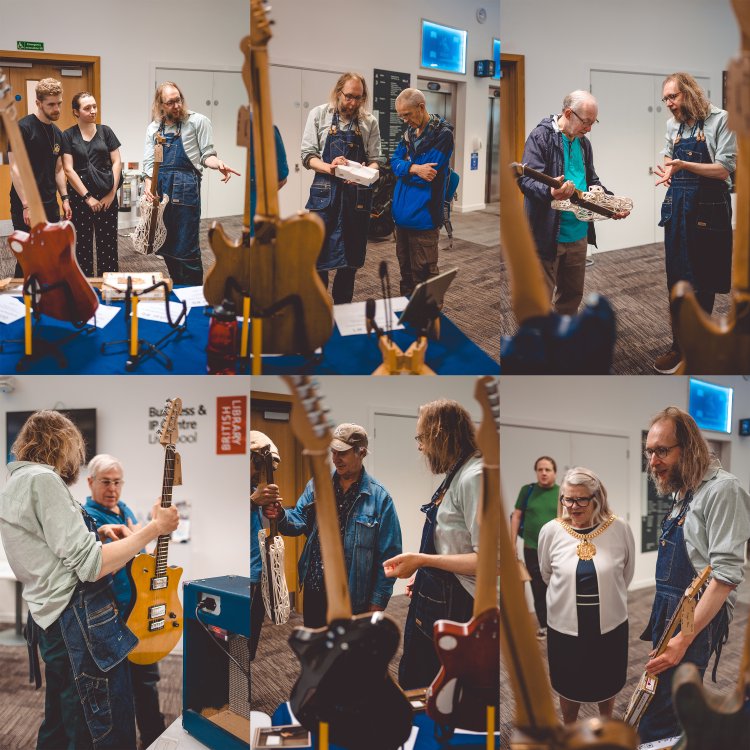
So my thanks to everyone who stopped by: I very much hope you got something out of stopping by, because I know that I did. I’ve been back in the workshop since, and I’ve been motivated to try get on with the next hurdle that is in front of me, as I can see how clearing those in the past has helped me progress. Similarly, I’ve been doing difficult or tedious bits on one of the builds I have going, but appreciating now that before these would have been a source of angst and stress, but now whilst I’d not say they’re easy, experience means I execute them much more confidently, a think I’d not have thought about without spending a day reflecting on how things have come along.
At the end of Makefest came the announcement that the wonderful folk who have shepherded the event are stepping down: Caroline, Mark, and Denice have done a great job, and I can’t thank them enough for the opportunity Makefest has given me over the years. I’ve had so many interesting conversations, been able to give my guitars over to people to play who never would have expected to get to play a custom hand-built instrument, and best of all once a year I get to stand in a library, normally a sanctum of “shhh”, and tell people it’s okay, you can definitely make some noise today.
I’ve made some friends along the way: I knew some of the DoES Liverpool crew before hand, but I can clearly remember meeting Snoof for the first time as she stopped by to try out one of the guitars, and over the years feel lucky that I’ve become part of that maker community. I remember vividly being chastised on the first year by someone for not knowing Frank Zappa’s work, something I corrected for when they stopped by the next year. I remember one of the steam-punk pirates coming around and offering what I suspect was a hip-flask of something should I be flagging (and the fact that I have anecdotes at all about steam-punk pirates is something to treasure in of itself). This year I suspect the conversation I’ll remember the most is this one:
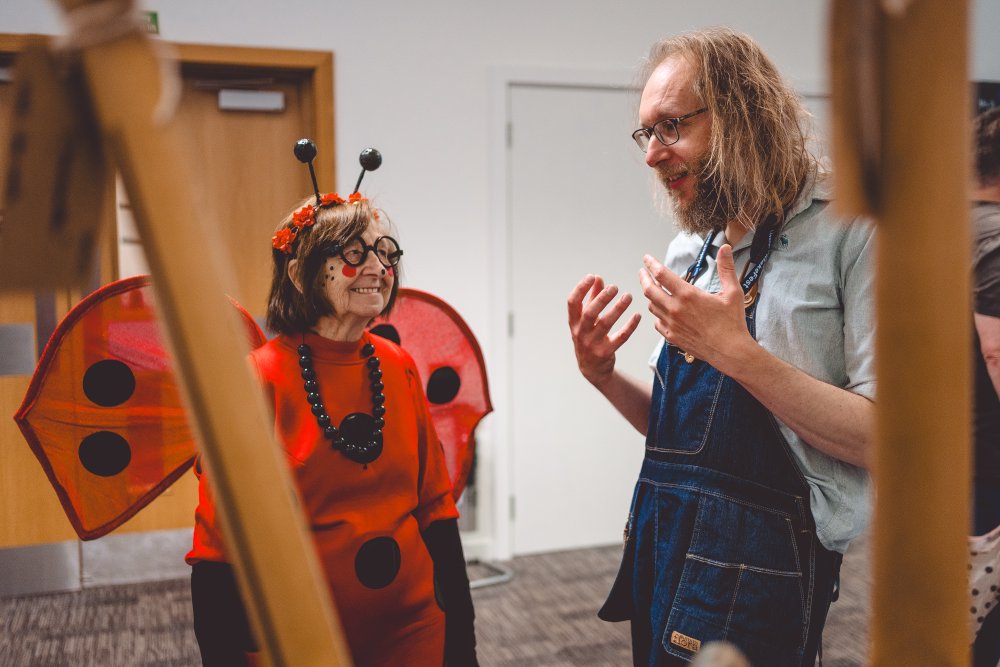
No, I didn’t ask, I figured that’d be rude, and I like to assume they always dress like that.
Most of all I’m grateful that Makefest reminds me that guitars are fun and an experience best shared. So thanks once more to Caroline, Mark, and Denice, and all the others that have helped over the years and all the volunteer crew, I really appreciate it. I wish the organisers all the best for their well earned retirement from their roles, and will await to see what could be next year. Something I’d be happy to help be a part of make happen again if possible, though it’s hard to currently know what that might be productively that given I live 200 miles away. But it’s a unique event, and worth preserving in some form if possible.
Finally, a shout out to my other half, Laura, who every year supports the madness that is trying to cart all of the stuff from Cambridge up to Liverpool and back again, and makes sure I’m fed and watered throughout the day. In making support of others is everything, and that includes attending maker events like this!
